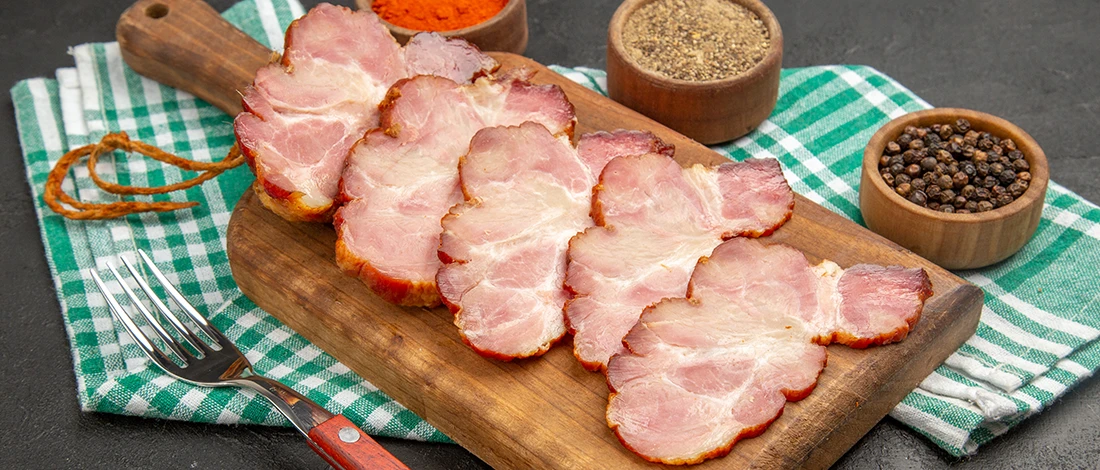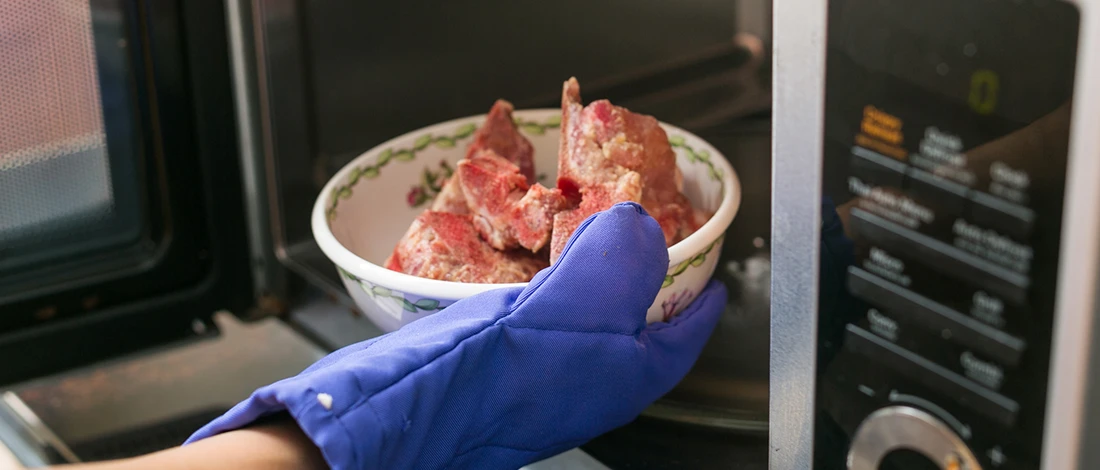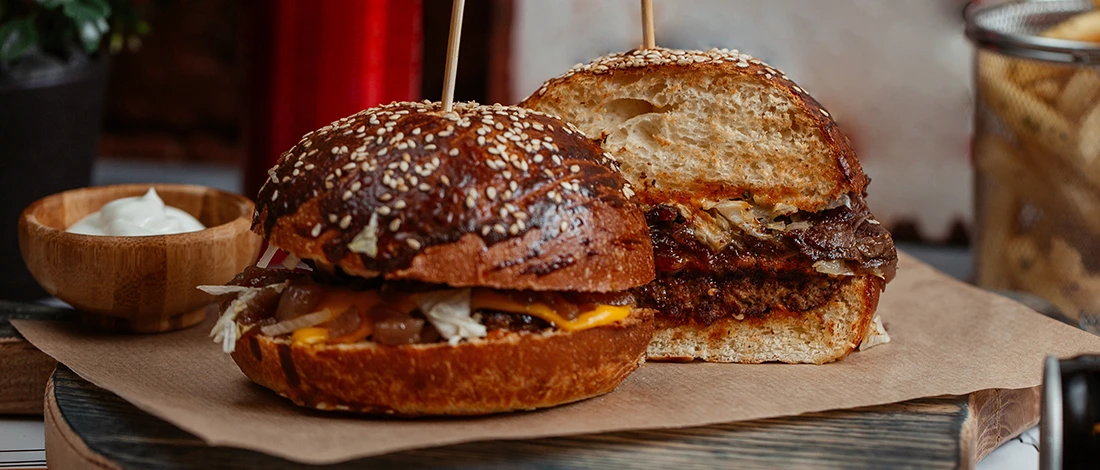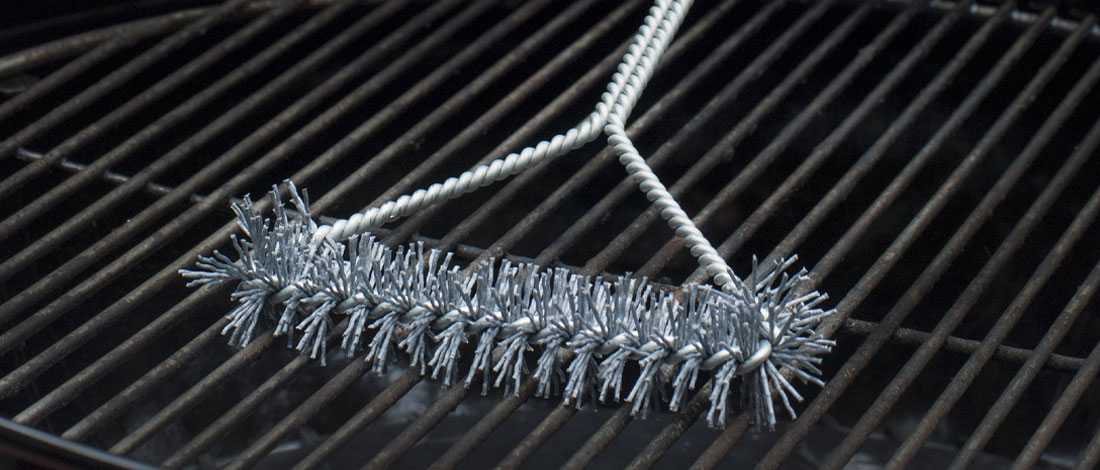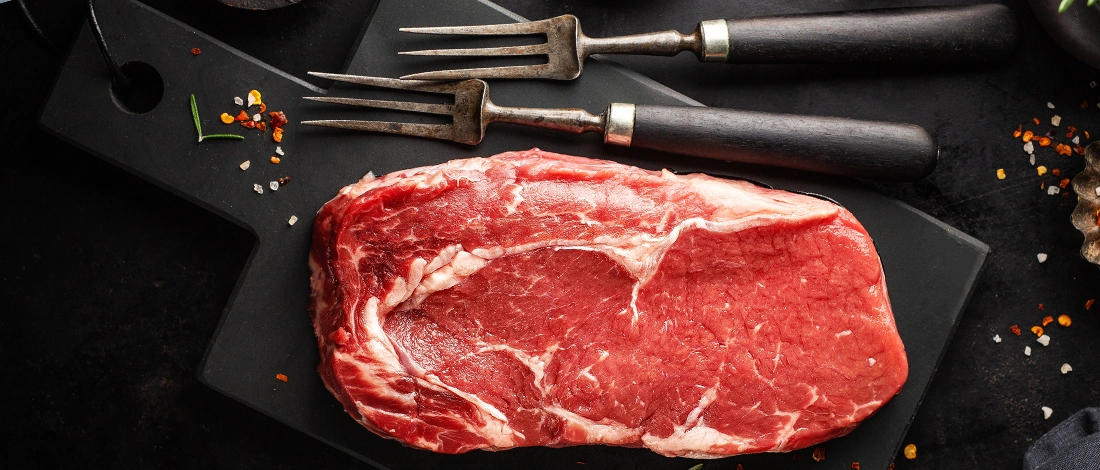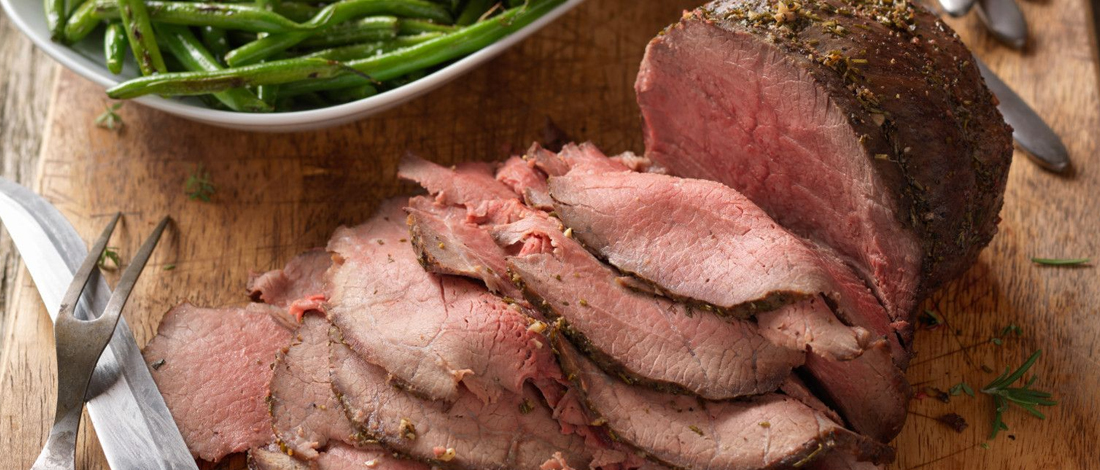At Carnivore Style, we've tried almost all raw meat dishes from different cultures as meat lovers.
We believe diversifying our gourmet palette and trying these dishes will give us a unique experience and an exciting taste of different cultural lifestyles.
However, exploring raw beef dishes also led us to a deep understanding of the importance of safety and preparation techniques.
After extensive research and consultation with culinary experts and health professionals, we've uncovered the 8 best raw beef dishes that not only tantalize the taste buds but also come with proven tips for safe consumption.
Quick Summary
- Raw beef dishes, popular in various cultures, include Kitfo, Koi Soi, Beef Carpaccio, Yukhoe, Hackepeter, Beef Tartare, Sashimi, and Crudo, each with unique preparation methods and ingredients.
- Safe consumption of raw beef dishes involves sourcing from reputable suppliers, using fresh meat, keeping the meat refrigerated, and using sharp knives for precise cuts.
- Side dishes that pair well with raw meat dishes include Bok Choy, Quinoa salad, Sesame Soba noodles, and Avocado and cucumber salad.
- I recommend ButcherBox because their meat is from healthy, 100% pasture-raised animals with no hormones or antibiotics treatments.
8 Best Raw Beef Dishes
Trying raw meat can be a treat. Here are the eight best traditional raw meat dishes from worldwide.
1. Kitfo
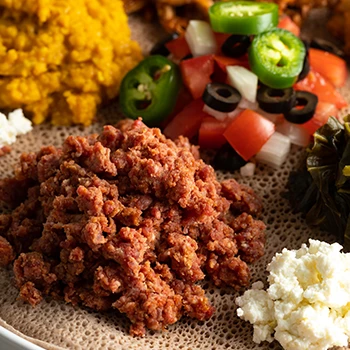
Kitfo is a typical Ethiopian meal from raw minced beef and served with toppings such as a spicy marinade rub and niter kibbeh, a type of clarified butter.
The meal is thought to have evolved with the Gurage people in Ethiopia's southern area and is often served in Ethiopian restaurants worldwide.
The best raw meat for Kitfo is a cut called shent (an Ethiopian beef cut), but you can make your own Kitfo meat dish version using the American ribeye steak.
2. Koi Soi
Carpaccio is an Italian dish that primarily consists of raw, thinly sliced beef. But there are recent Carpaccio variations that call for tuna, salmon, or ox meat.
It's thinly sliced, pounded, and served uncooked as a starter or light meal alongside french fries or toasted rice.
Carpaccio is frequently topped with extra virgin olive oil, fish sauce, vinegar, lemon juice, salt, and black pepper.
The most critical step in preparing beef carpaccio is to work with partially frozen meat, which makes thinly slicing simpler. Remember to use the right sharp knife to get extra perfect slices.
3. Beef Carpaccio
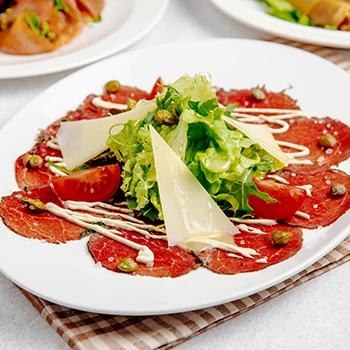
Carpaccio is an Italian dish that primarily consists of raw, thinly sliced beef. But there are recent Carpaccio variations that call for tuna, salmon, or ox meat.
It's thinly sliced or pounded and served uncooked as a starter or light meal alongside french fries or toasted rice.
Carpaccio is frequently topped with extra virgin olive oil, fish sauce, vinegar, lemon juice, salt, and black pepper.
The most critical step in preparing beef carpaccio is to work with partially frozen meat, which makes thinly slicing simpler. Remember to use the right sharp knife to get extra perfect slices.
4. Yukhoe
Many people enjoy yukhoe served raw either as a side dish or as an a la carte meal. As you chew, the umami of premium-quality beef floods your tongue, backed by crisp pears with a slightly sweet flavor.
The aroma of pine nut powder and raw egg yolk adorns the aftertaste.
The first thing that springs to mind is yukhoe with sweet ganjang (soy sauce); however, for the most traditional yukhoe, salt is substituted for ganjang.
It's gently seasoned with salt, sesame oil, and crushed sesame seed before serving with vinegar mustard sauce.
Although beef is the most commonly utilized meat for yukhoe, pork, chicken, and horse meat yukhoe were also popular in the past.
5. Hackepeter

Hackepeter is a German raw meat spread composed of fresh, finely minced beef that can be seasoned with crushed garlic, caraway, salt, and pepper.
The most common method to enjoy Hackepeter is on toast topped with raw red/white onion slices. You can add melted parmesan cheese for extra creaminess.
The Carnivore Style's team discovered that Hackepeter goes by many names based on the region of originality and the flavorings used.
- Outside of Berlin, Hackepeter is referred to as Mett.
- When tomato paste and minced onions are mixed with the meat, it is known as Zwiebelmett.
- When seasoned with marjoram and raw onions, it's called Thüringer Mett.
6. Beef Tartare
Steak tartare is made from raw ground meat (beef).
The steak is seasoned with chopped capers, Worcestershire sauce, olive oil, spices, and pickled vegetables.
After making the steak tartare mixture, it's shaped into round patties and topped with raw egg yolk.
7. Sashimi
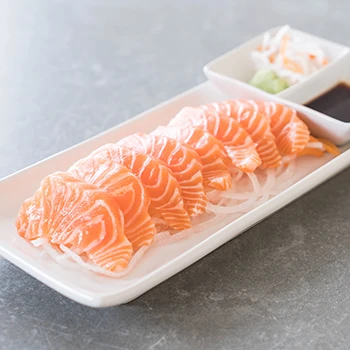
Sashimi is a Japanese meal consisting of thin slices of raw fish and shellfish.
In other areas of Japan, Sashimi can also be prepared with thinly sliced raw meats such as cattle, pork, chicken, and horse meat (though fish and seafood are the most prevalent).
While most Sashimi is eaten raw, sometimes it's temporarily cooked or lightly seared for flavor and texture. And also to minimize food contamination.
8. Crudo
Crudo (the Spanish word for raw) is a traditional German-Chilean meal comparable to beef tartare.
It is prepared by layering finely minced raw beef over pre-sliced rye bread. Then, a yogurt-mayonnaise sauce, olive oil, and lime juice are added before sprinkling some chopped white onions to finish.
Fish and shellfish are used instead of beef meat in other Crudo variations.
The Safest Ways to Eat Raw Meat

While eating raw meat can be risky, here are four tips to help you add raw meat to your menu and eat it safely:
1. Buy From an Authentic Source
Don't start in the grocery meat section if you seek the freshest beef for your raw dishes. This is especially important if you're preparing a recipe with raw beef mince.
Instead, buy fresh organic, grass-fed, and pasture-raised beef at a reputable local butcher.
In my experience, these ones have stronger immune systems than factory-farmed cattle, fewer parasites, and lower bacterial concentrations.
To compensate for the artificial conditions in which they are grown, factory-farmed cattle are given a daily diet of growth hormones and antibiotics [1].
If you want raw beef mince, I recommend you purchase a cut of meat and grind it on your own. And since minced meat has more surface area than a whole slice of meat cut, bacteria tend to congregate on the meat's surface, so mince it as soon as possible [2].
"The biggest risk of eating raw meat dishes is contacting foodborne illnesses caused by the pathogens in raw meat."
- Daniel Preiato, Registered Dietician
2. Eat It Fresh
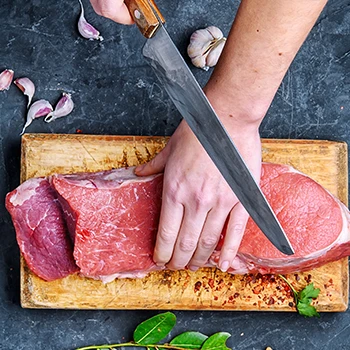
Raw meat acquires a foul smell and slimy texture, making it relatively trivial to tell whether it has gone bad.
The key to eating raw meat and having a safe and delightful experience is to have the freshest meat available.
If you intend to eat any raw meat dish held for more than a day or two, the hazards increase dramatically, and the meal quality will suffer.
If your beef has a foul odor, an awful flavor, and a slimy texture, it's time to toss it out.
3. Always Refrigerate
When raw meat is not refrigerated, microorganisms that usually cause food poisoning multiply quickly [3].
Keeping your raw meat refrigerated until ready to serve and eat is critical.
When refrigerating raw meat, keep note of the following:
- Refrigerate as soon as possible after buying from your butcher.
- Never leave raw meat in a hot or room temperature closed car. And if you must, keep it locked in an airtight cooler or esky with an ice pack for the ride home.
- As soon as you get home, avoid leaving your raw meat on the counter because the room temperature accelerates bacteria growth [4].
Also Read: How Long Can Raw Meet Sit Out?
4. Use A Sharp Knife
My last tip when eating raw meat is to use a sharp knife when slicing the meat. Using a sharp knife exempts you from winding up with crushed meat, affecting the meal's texture.
The correct cutting equipment will also give you more precision, allowing you to avoid fatty knots.
Read More: Best Knives for Cutting Meat
Best Side Dishes For Raw Meat

Here are four side dishes if you're looking for delectable condiments to pair with your raw meat dishes.
- Bok Choy: Bok choy is the freshest vegetable available, whether fried or roasted with olive oil. Its delicate flavor, crispness, and emerald green leaves are irresistible. I love the nutty, spicy taste of stir-fried baby bok choy that complements almost all raw meat dishes.
- Quinoa salad: Quinoa salad is usually a fantastic choice for a basic salad that is satisfying and effortless to prepare. The avocado and mango in this salad give it a tropical flavor that will go well with your beef tartare. I recommend drizzling it with lime dressing to add a tangy note to your healthy quinoa salad.
- Sesame Soba noodles: Sesame Soba noodles check the right recipe boxes; it's quick, simple, tasty, and healthy. It works well with many raw meat main courses, but you can enjoy it as a delicious standalone. The sesame also adds a bit of crunch to the dish.
- Avocado and cucumber salad: Avocado and cucumber are popular additions to raw meat dishes, and pairing them in a salad makes perfect sense. This avocado cucumber salad has an appealing creaminess and refreshing freshness, making it ideal for fresh raw steak tartare. Plus, it takes less than 10 minutes to make.
FAQs
What Dish Is Made With Raw Beef?
Steak tartare is a dish made with raw beef. It's raw minced beef shaped into a patty and served with a raw egg yolk.
What Is the Italian Dish That is Raw Meat?
The Italian dish that is raw meat is Carpaccio. It's typically served as an appetizer.
Is It Okay to Eat Raw Beef?
It's okay to eat raw beef, provided it's fresh and at the right temperature.
References:
- https://jones.ces.ncsu.edu/2019/01/hormones-and-antibiotics-in-animal-production/
- https://www.ncbi.nlm.nih.gov/pmc/articles/PMC170872/
- https://meatscience.org/TheMeatWeEat/topics/meat-safety/article/2015/11/12/what-foodborne-organisms-are-associated-with-meat-and-poultry
- https://www.ncbi.nlm.nih.gov/pmc/articles/PMC8112314/


